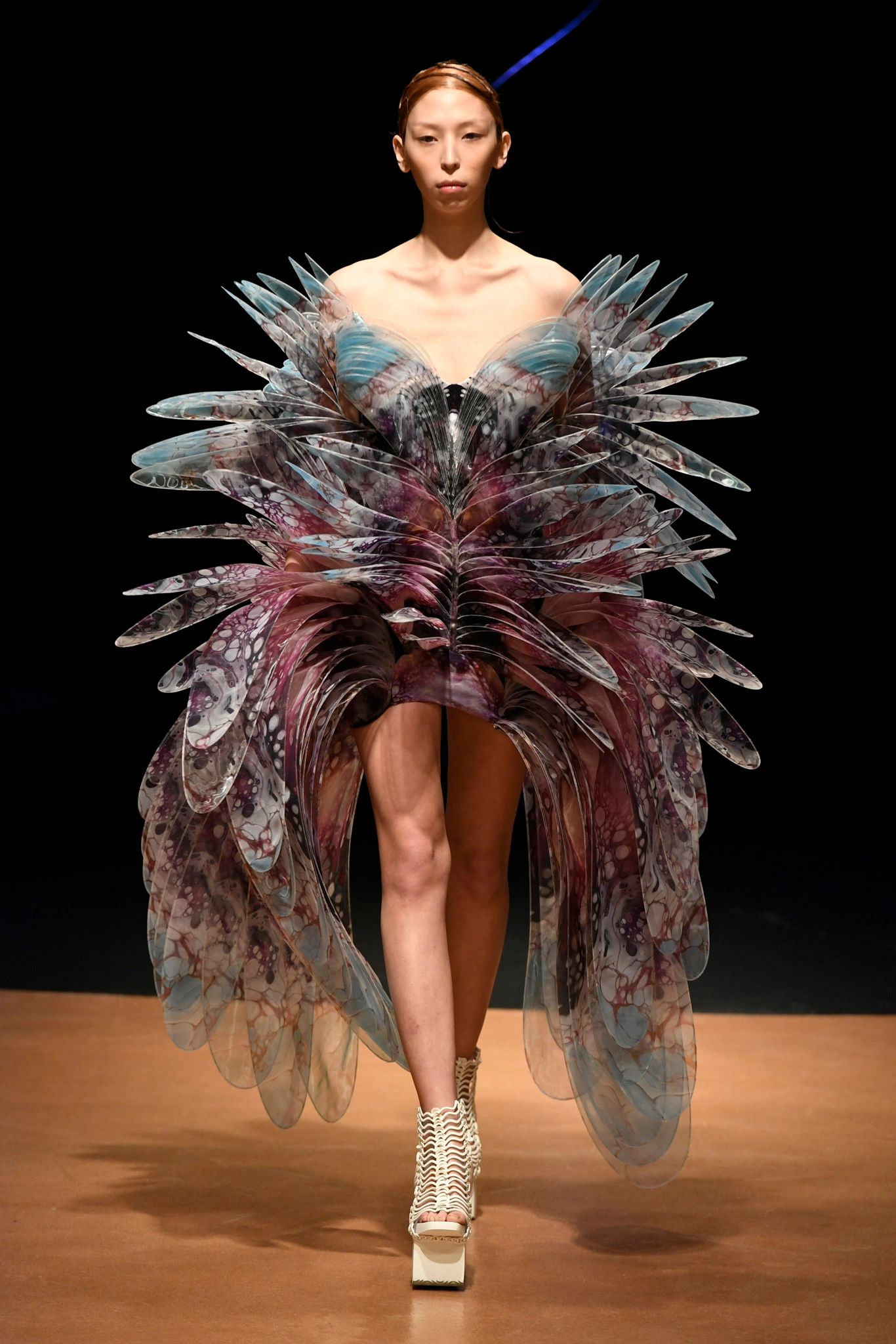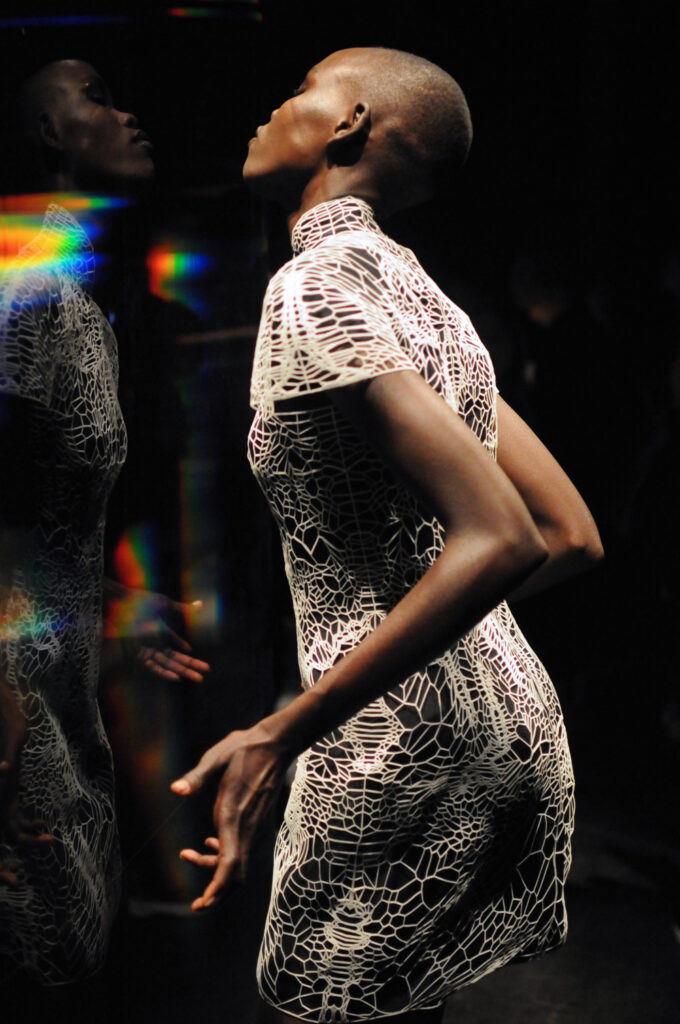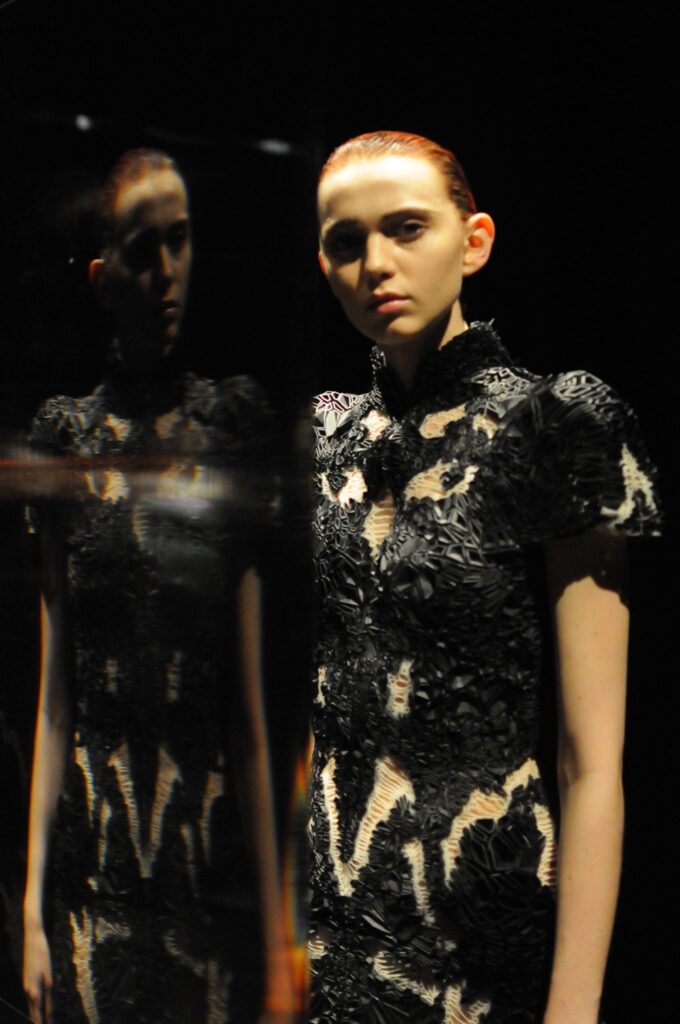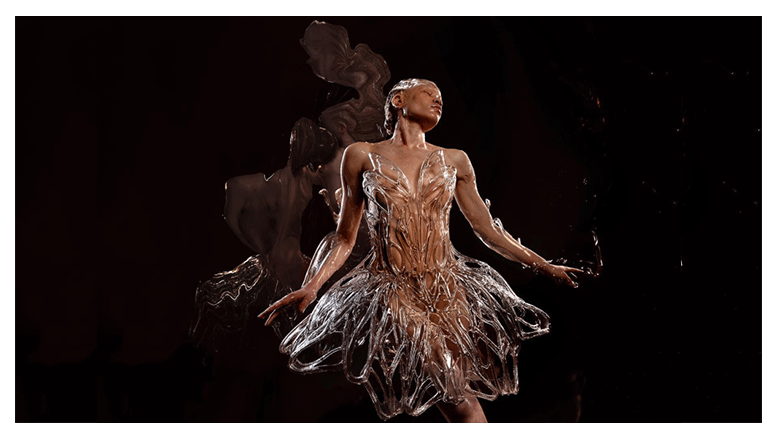Digital technology in fashion has dramatically evolved in recent years, transforming how designers create, consumers shop, and the industry envisions its future. From luxury fashion to mass market retailers, brands are embracing innovation not only to stay competitive but to build more sustainable, adaptive, and inclusive systems.
In 2020, for example, Virtual Fashion replaced Runway Weeks due to the COVID-19 pandemic, causing the industry to embrace Digital Media. Some designers even created virtual garments for their digital avatars, blending the lines between digital identity and personal expression. While digital fashion overlaps with virtual clothing (more on that in the future), this blog specifically explores how technology is revolutionising physical fashion design and production.
Let’s dive into what digital technology in fashion is, why it’s gaining traction, and how leading designers are using it to push boundaries and build a more sustainable future.
What is Digital Technology in Fashion?
The Fashion Industry has long been a frontrunner in innovation, from the invention of the silk reeling and sewing machines to the growth of e-commerce. It is trend-driven and continually evolving, just like the Tech Industry. Today, the Fashion Industry is partnering with technology providers, investing in startups, and some cases, building their in-house technology to expand their revenue streams and business models. And together, Fashion and Technology continue to evolve.
So, how do you integrate Fashion and Technology? Realistically, the concept of Fashion and Technology is not a newly developed phenomenon. It has existed for the past three decades but has taken its limelight since the 2020 Pandemic. Brands use digital tools in everything from fabric sourcing and design prototyping to predicting trends and creating personalised experiences. Technologies like robotic stitching and cutting, artificial intelligence (AI) algorithms, and 3D-printed clothing are not just modern conveniences—they’re reshaping the entire value chain.
Besides, technology is automating, personalising, and speeding up the Fashion Industry. And this transformation isn’t just about innovation—it’s also about impact.
How is Digital Technology in Fashion Sustainable and Beneficial?
Sustainability has become a critical goal for the industry. Digital technology offers practical, scalable solutions to reduce waste, lower carbon emissions, and minimise animal exploitation.
One significant area of innovation is Material Development. For instance, researchers and designers are now creating lab-grown materials that mimic leather or fur without harming animals. Adidas, in partnership with Parley for the Oceans, has developed shoes from ocean plastic, demonstrating how brands can combine performance and sustainability. With Digital Technology and Material Innovations, sustainable and earth-friendly couture can soon become available to the world, either from recycled materials or organic matter such as orange peels, mushrooms, and algae.
Another breakthrough is 3D printing, which reduces overproduction by enabling on-demand manufacturing. A 3D printer allows professionals to turn even the most improbable ideas into reality, transcending the boundaries of design. With precise digital modelling, designers can create intricate patterns, combine textures, and develop customised apparel for diverse body types. This level of personalisation—powered by data—makes fashion more inclusive and accessible, while reducing unnecessary inventory and textile waste.
Digital technology is setting the stage for a circular economy, and by 2050, wearable fashion is expected to become entirely sustainable—an ambitious, but increasingly realistic vision.


3D Printing designs by Ganit Goldstein and Julia Koerner
Designers Embracing Digital Technology in Fashion
Here are my top six trailblazing designers using digital technology in fashion not just as a tool, but as a creative and ethical philosophy.
IRIS VAN HERPEN
Topping this list is my new fav, a Dutch fashion designer and couturier renowned for her darkly surreal and futuristic aesthetics. She also exhibited her latest collection during Paris Couture Week 2022. As one of the first fashion designers to adopt 3D Printing technologies, her designs have drawn appeal to artists such as Lady Gaga, Björk, and Tilda Swinton. The designer combines cutting-edge technology, high-end materials, and meticulous craftsmanship to create elegant designs. Her artistic and fashion approaches reflect the material world but also promote sustainability. In addition, having an interest in architecture, she benefits from the visual connections between fashion and architecture to enhance her conceptual understanding of fashion and technology.
The designer draws inspiration from the dynamic interaction between body and mind. She is motivated by how nature manifests beauty, mystery, and disorder. For example, sound waves, symbiosis, synapses, magnetism, and kinetics are some of the lesser-explored natural phenomena she uncovers through biomimicry techniques. Most of her design collections advocate empowering women by embracing new forms that will lead to a more meaningful, diverse, and environmentally conscious fashion in the future.



ANOUK WIPPRECHT
Another established Dutch Fashion-Tech Designer, building fashion experiences beyond essential appearances with engineering, science, and interaction. Her work explores how clothing enables us to interact with the world in new ways. Using microcontrollers and artificial intelligence (AI), she creates dresses that move, breathe, and react to the surrounding environment, thus expressing the wearer’s psychological state.
Her product designs incorporate sensors that analyse the space surrounding the wearer, while body sensors monitor stress levels, comfort, and anxiety. For example, she created a dialogue between the body and the environment with her famous “Smoke Dress.” The dress camouflages itself with a cloud of smoke when someone enters the wearer’s personal space. Then, with the “Synapse Dress,” users can alter their appearance in real-time using their body’s electrical current. Isn’t that interesting?
NICCOLO CASAS
An Italian Architect, Designer, and the founder of Niccolo Casas Architecture leads an integrated design practice. He strives to collaborate with various fields to redefine sustainable future inhabitation. In addition to architecture, design, couture, fashion tech, and data visualisation, he also works in medicine. The designer has previously collaborated with other fashion designers like Iris Van Herpen and Anouk Wipprecht for multiple projects.
Using 3D Printing technology and craftsmanship, he creates dynamic and aesthetic collections. The components of his designs adapt to the model’s body shape and position to enhance their movement. For example, Niccolo and Van Herpen fused technology with handicrafts in their Lucid Collection in 2016, where they created a high-quality web with durable polyamide printing. It featured two 3D-printed “Magma Dresses,” combining traditional manufacturing methods with flexible and rigid 3D-printed materials. Overall, Niccolo emphasises how technology is reshaping the way we interact with the world around us.


JUN KAMEI
Juggling between London and Tokyo, the fashion-tech biomimicry designer with a background in Material Science develops products influenced by nature, anticipating future lifestyles. His innovative gadgets utilise polymers and algorithm-driven designs. Kamei founded “AMPHIBIO LTD.,” an organisation that delivers innovation to the marine industry through design-led technology. During his recent project with the same name, he developed a 3D-printed underwater garment that functions as a gill. The project aims to simplify everyday life in a world where humans live close to water due to rising sea levels.

NOA RAVIV
Not many people are familiar with Noa Raviv, but she is a well-known young Israeli fashion designer with expertise in grid patterns and 3D Printing in her couture collections. In simple terms, she transforms 2D grid lines into textiles to create an optical illusion. Using advanced technologies like 3D Printing and Laser Cutting, the designer at the crossroads of fashion and technology seeks a balance between harmony and chaos, tradition and innovation, handmade and machine-made.
Raviv has collaborated with Stratasys, a tech printing company, for the Anna Wintour Costume Centre’s Manus X Machina exhibition in New York. She presented the “Hard Copy” collection, based on computer glitches, and emphasised the value of original objects today. Moreover, her work has also appeared in magazines and publications such as Vogue, The Cut, BBC, and many others.

JULIA KOERNER
The award-winning Austrian Fashion Tech designer works at the intersection of architecture, product design, and fashion design in her digital design firm, JK Design GmbH, specialising in additive manufacturing and robotics.
In 2019, Archinect dubbed her “Architecture’s Queen of 3D Fabrication” for her innovative designs in 3D Printing. Her 3D-printed fashion pieces embrace a dazzling organic design. Besides, are you a fan of MCU Movies? Have you seen Black Panther? Do you recall Queen Ramonda? Julia Koerner designed her costume and received an Oscar for Best Costume Design. This costume represented the traditional African culture using cutting-edge technology.


A Vision for the Future
The creative potential of digital technology in fashion is limitless. From biomaterials and 3D printing to AI-powered design systems, we’re entering a future where fashion doesn’t just look good—it works better, lasts longer, and harms less.
As the industry redefines luxury, wearability, and ethics, these designers remind us that fashion isn’t just about what we wear—it’s about how we choose to live. Whether it’s a digital couture gown that reacts to your breath or a 3D-printed sneaker made from ocean waste, every stitch tells a story of evolution, responsibility, and imagination.
In the coming decades, fashion will not only reflect society but shape it, one innovative thread at a time. It is an ideal dream, wouldn’t you agree?
Image Courtesy: Vogue.com

